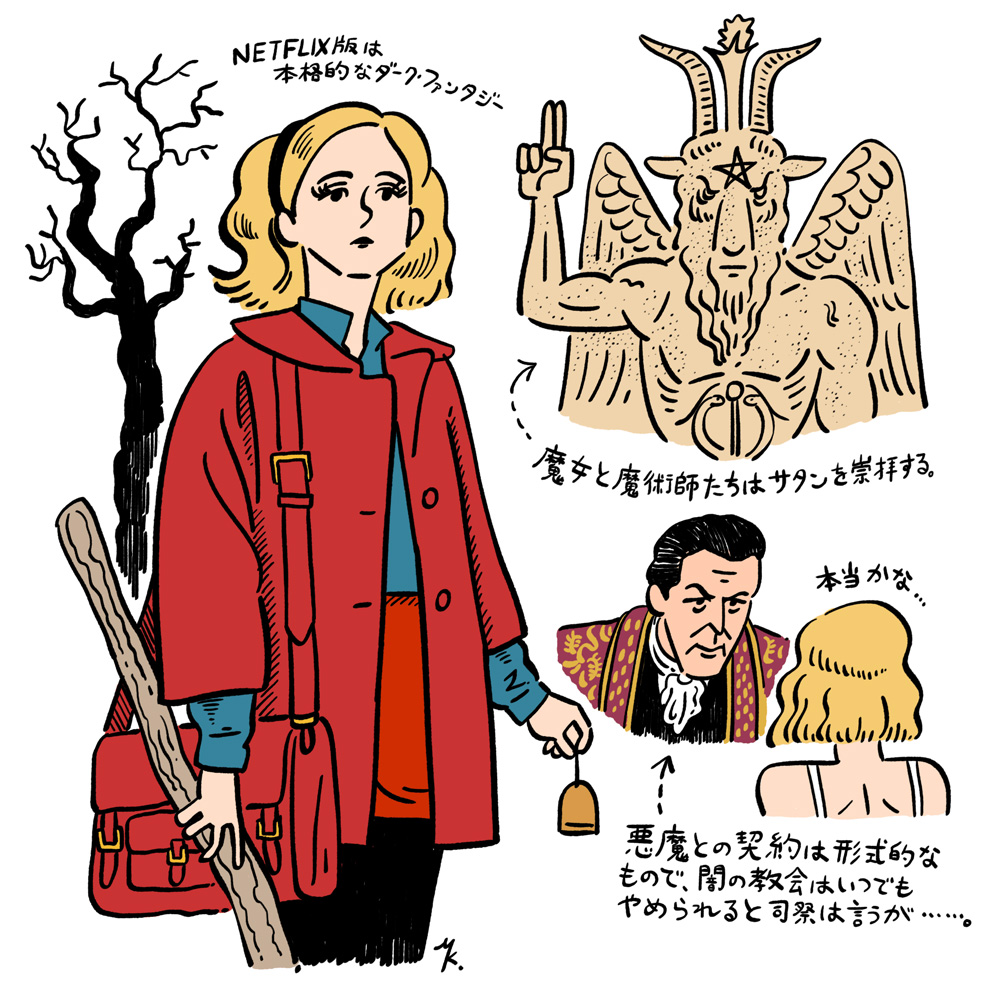The world of witches reinterpreted

While `` Sabrina '' was a sitcom and school comedy, `` Sabrina: Dark Adventure '' is a full-fledged dark fantasy. Its biggest feature is the way it depicts witches and the demon world. At least Kiernan Shipka's Sabrina doesn't shoot beams of light from her fingertips to make things disappear or appear. The magic here is to cast a spell and injure a doll modeled on the target to place a curse on it. In addition, the demon world in this worldview is not a different world that can be accessed from the closet, but a community of evil cults against Christianity, as was thought during medieval witch hunts, and witches and sorcerers are Satan. He serves the Lord of Darkness and belongs to the Church of Darkness. The setting is based on the legend that witches gain power through pacts (or sexual intercourse) with the devil, so the worldview is also very convincing. At the age of 16, Sabrina is forced to swear allegiance to Satan and sign a contract through a dark baptism ceremony, but the independent-minded girl who wants to choose and carve out her own life is unable to do so until then. He resists the rituals that have been taken for granted in the demon world. From here, Sabrina's battle begins.
During the day, she attends a high school in the human world, but this school is also dominated by a male-dominated principal and is run by rough American football club members, so Sabrina and her best friends work together to improve the school environment so that the female students can feel safe. They decided to form a club called WICCA (Women's Intersectional Cultural and Creative Association), an alliance to do so. By the way, Wicca is also the name of an actual witch religion, and the term has been expanded from there to be used as a common name for witchcraft in modern times. The reason why the witch religion is used as an abbreviation for the Women's Alliance seems to coincide with the fact that Sabrina is half human woman and half witch. Sabrina struggles both in a school where men have the upper hand and in the demon world, where she is forced to submit to Satan and male magicians.
Sabrina's father was a great magician who reformed the demon world with his progressive ideas, and Sabrina was born when he married a human woman. Against this background, Sabrina begins to dream of being able to bridge the gap between the demon world and the human world, which have been separated for a long time. For Sabrina, who has a boyfriend and best friend in the human world, and a family and people who understand her in the demon world, it is difficult to choose one world over the other. Connecting the two worlds is also for her own life. However, as she pursues her ideals, Sabrina comes to learn about the history of friction between the demon world and the human world, the truth behind her birth, and the secrets of the demon world and Satan...
Two visual works with completely different styles. However, the basic idea remains that she lives her high school life while hiding the fact that she is a witch. He may reveal his true identity to a small number of people, but in any case, the core of his worldview is the interplay between the demon world and the human world, and the interesting gap between them. Because the basic plot is easy to understand, there can be a wide range of arrangements and interpretations. It's fun to see the worldview you love depicted in a completely different way by using elements of the original work as a format, while keeping the main character's premise and the relationships between characters the same. Best of all, I was able to see the world of Sabrina, which I watched so obsessively as a child and thought I knew completely, once again in a completely new way, and even though it was a different experience seeing it for the first time, I felt strangely nostalgic in places. is happy.
Illustrations and text: Mizumaru Kawahara
Born in 1991. Illustrator. In addition to illustrations and covers for magazines and books, there are also illustration columns for movies and books. New movie reviews are currently being serialized in "SPUR" (Shueisha).

![Two Sabrinas, one comic [Mizumaru Kawahara's CINEMONOLOGUE Vol.34]](https://cinemore.jp/images/c39082937b207d68762c146054646cccbd1878dea006b39a64c19818241945c1.jpg)
